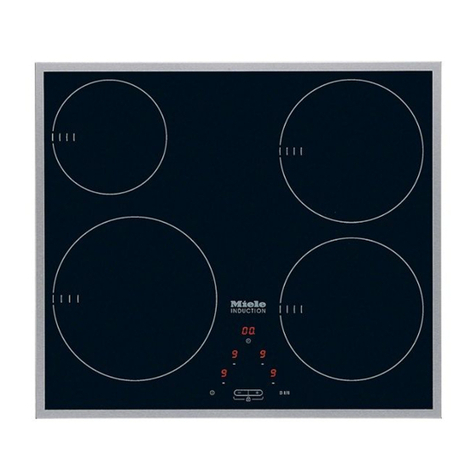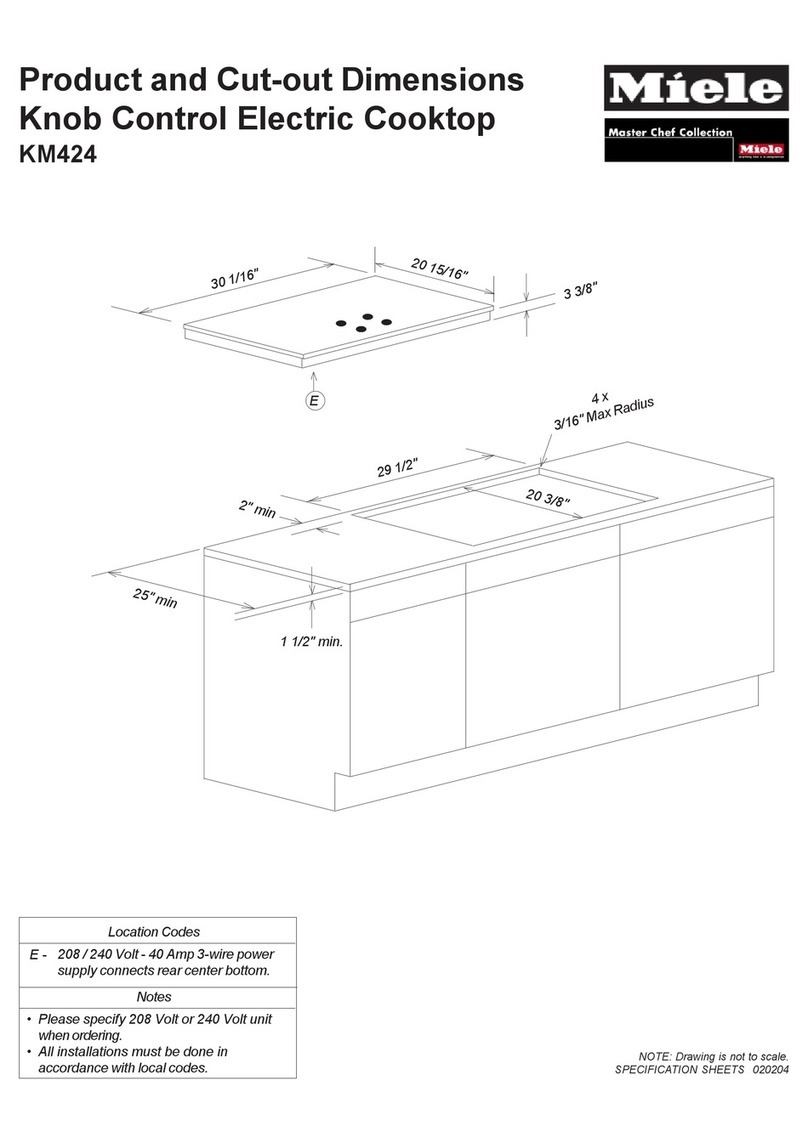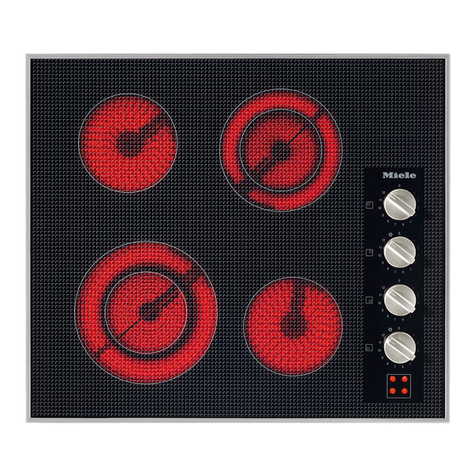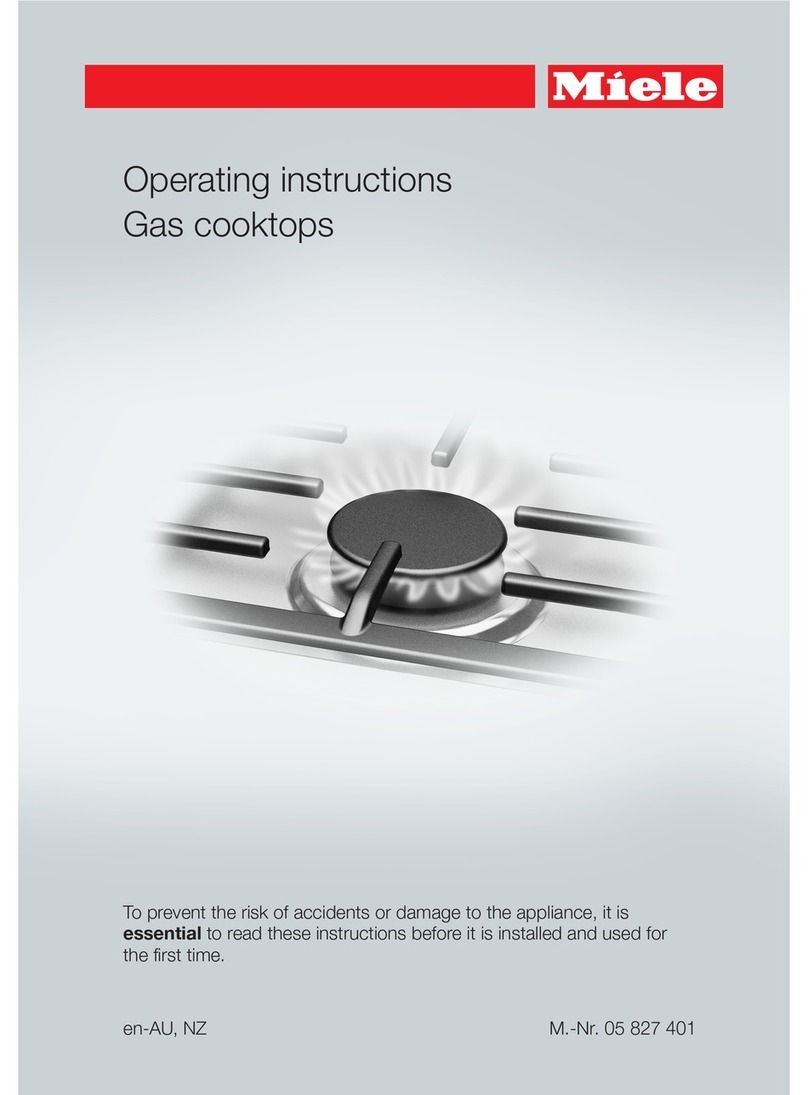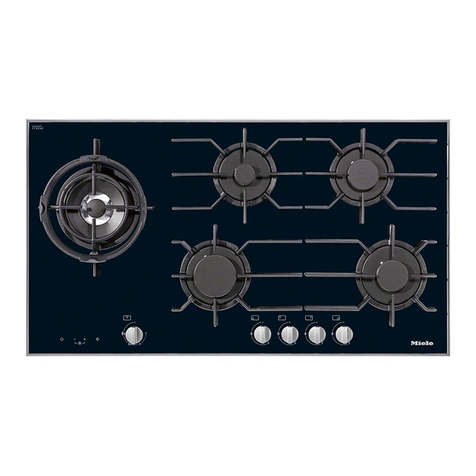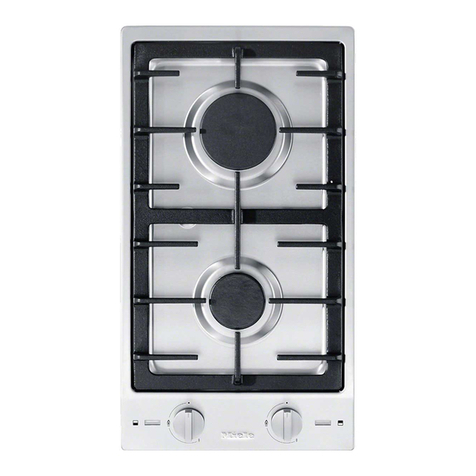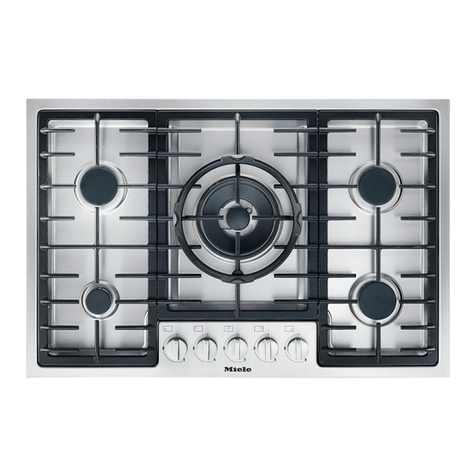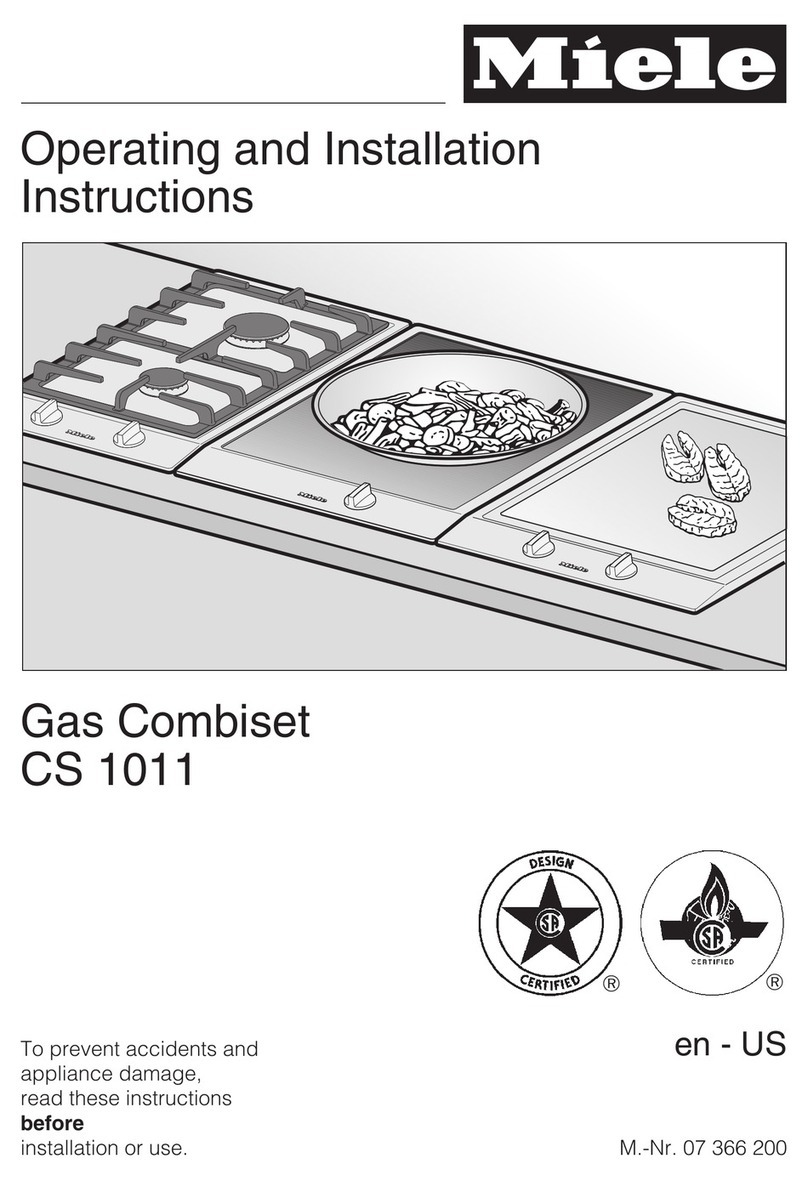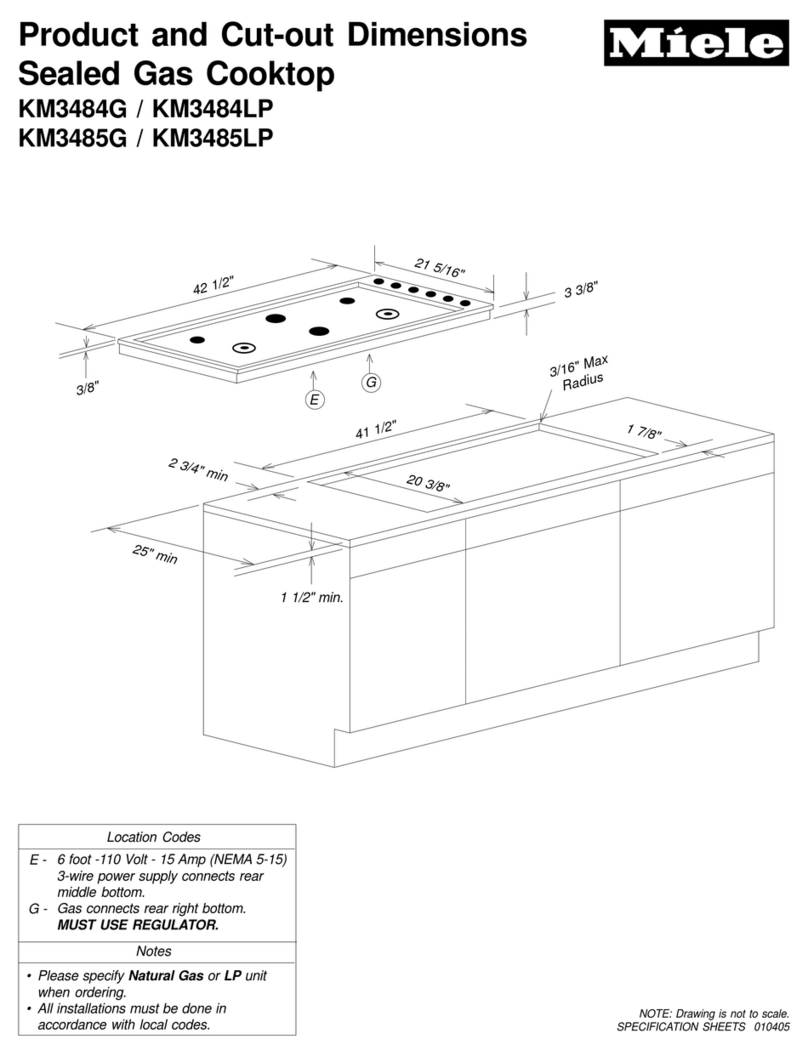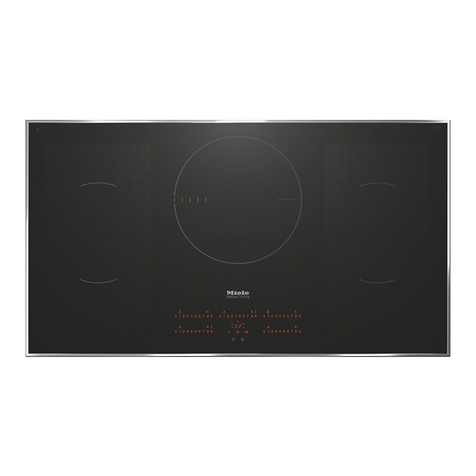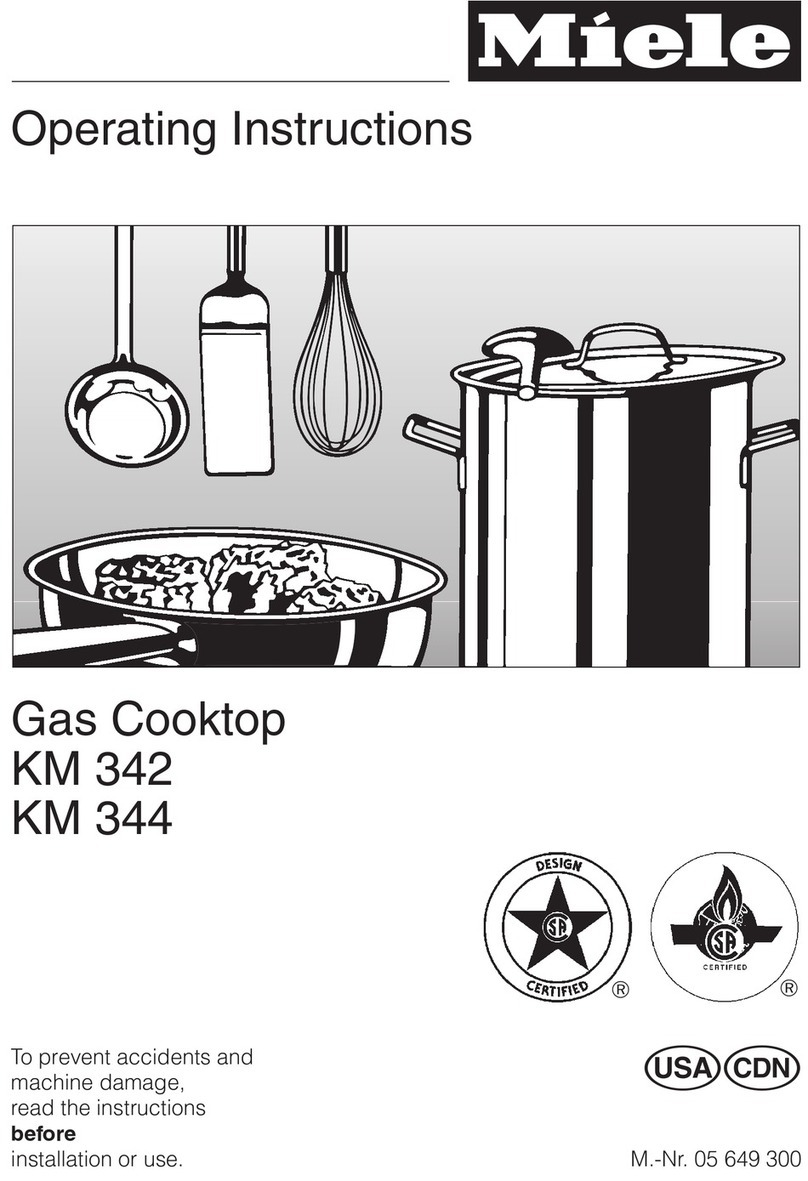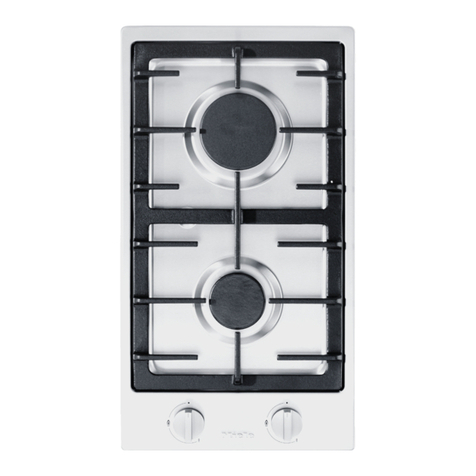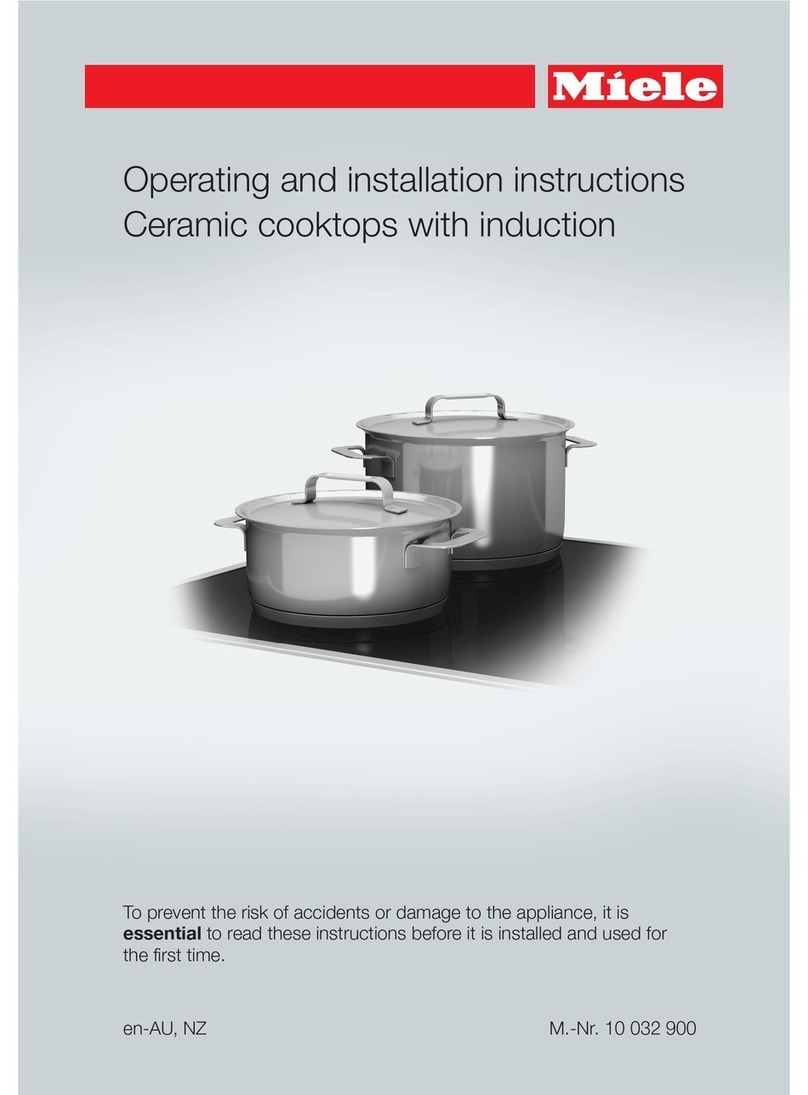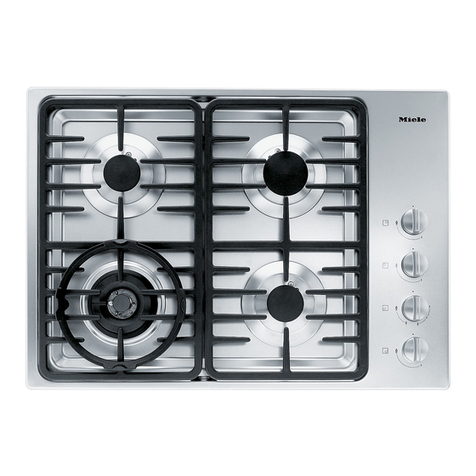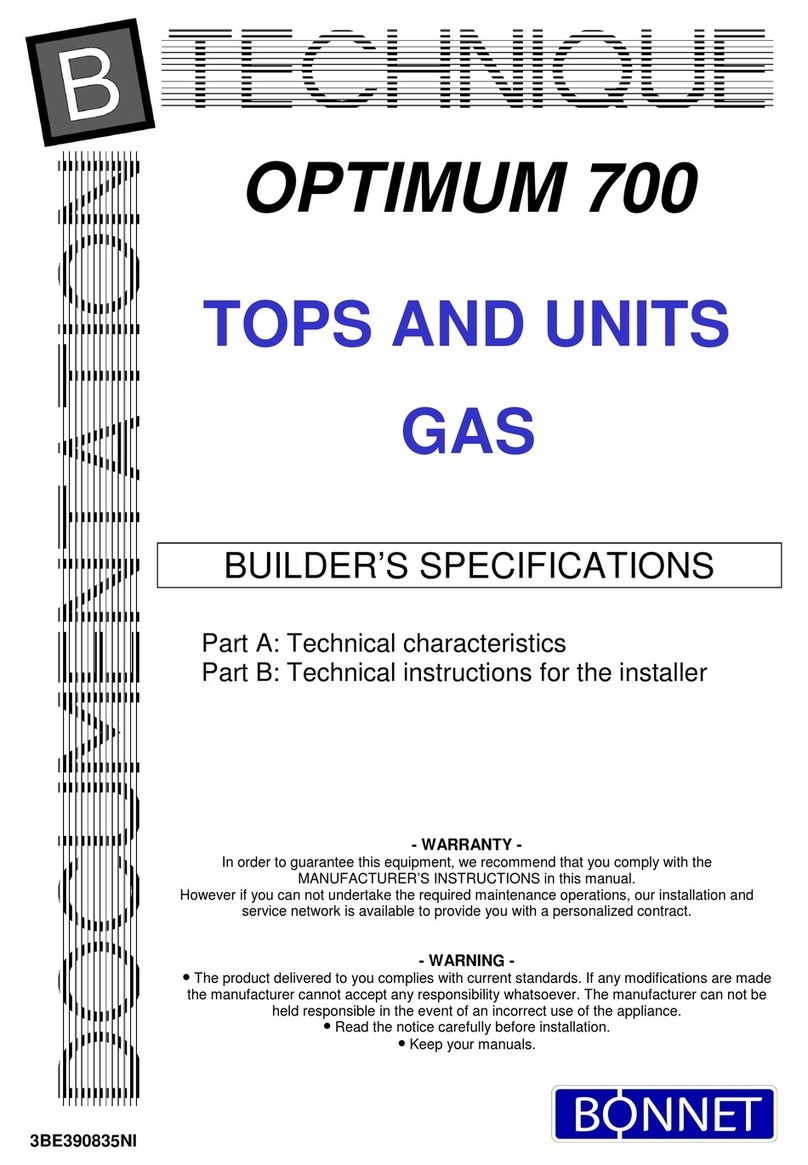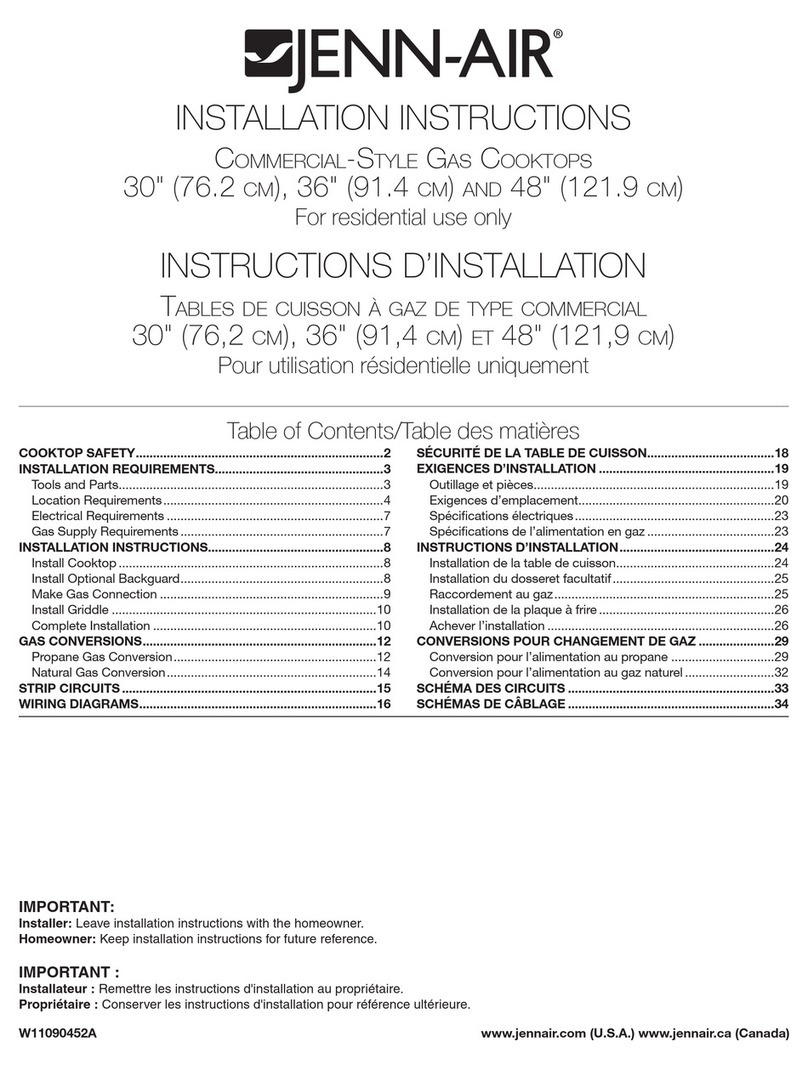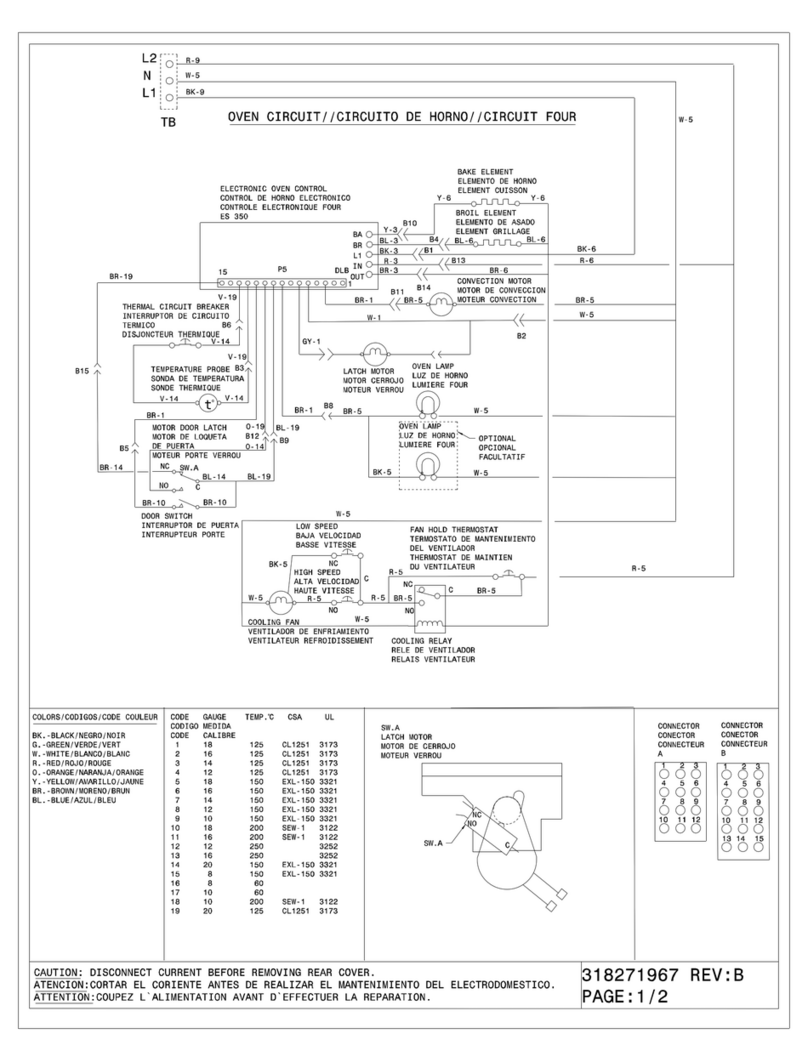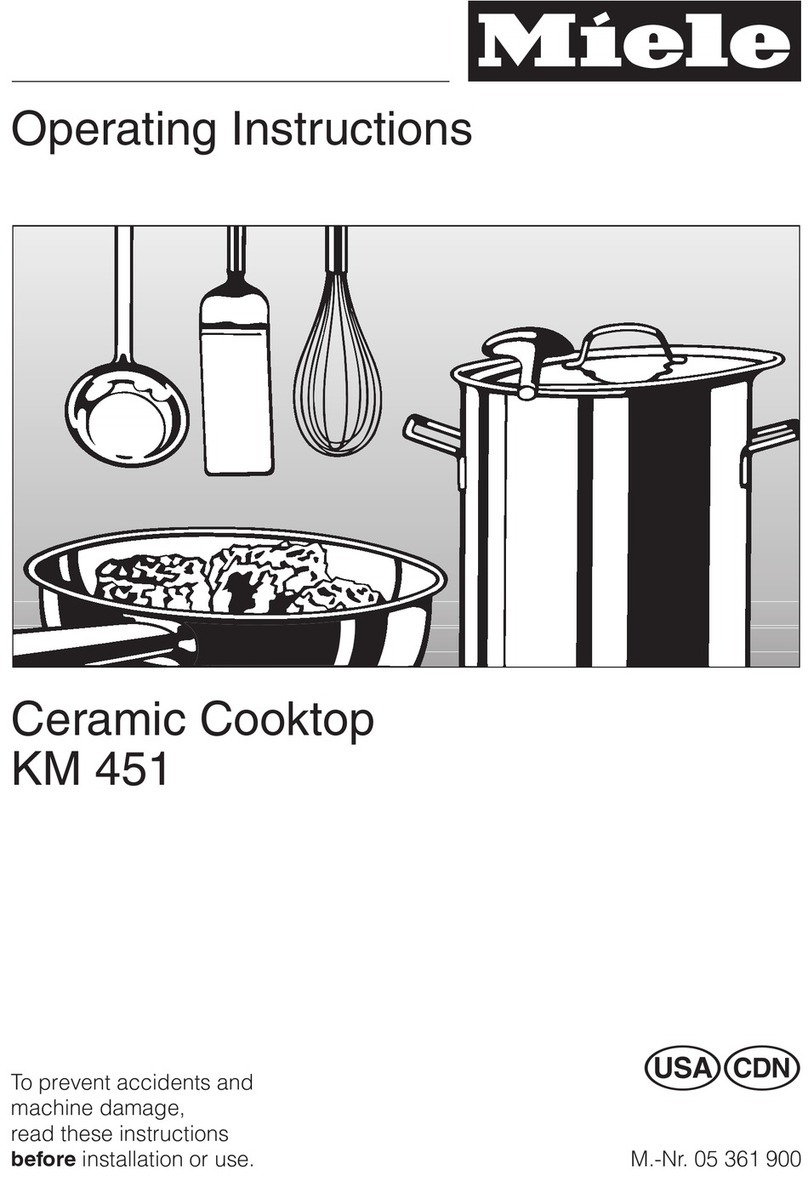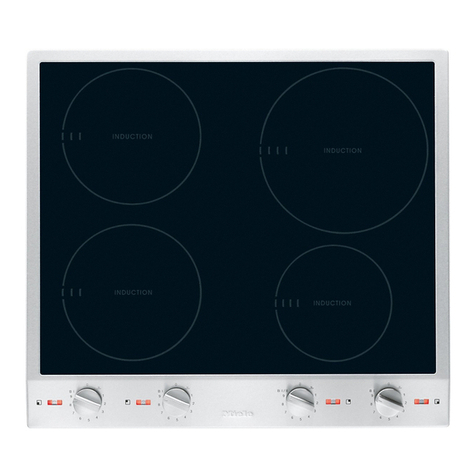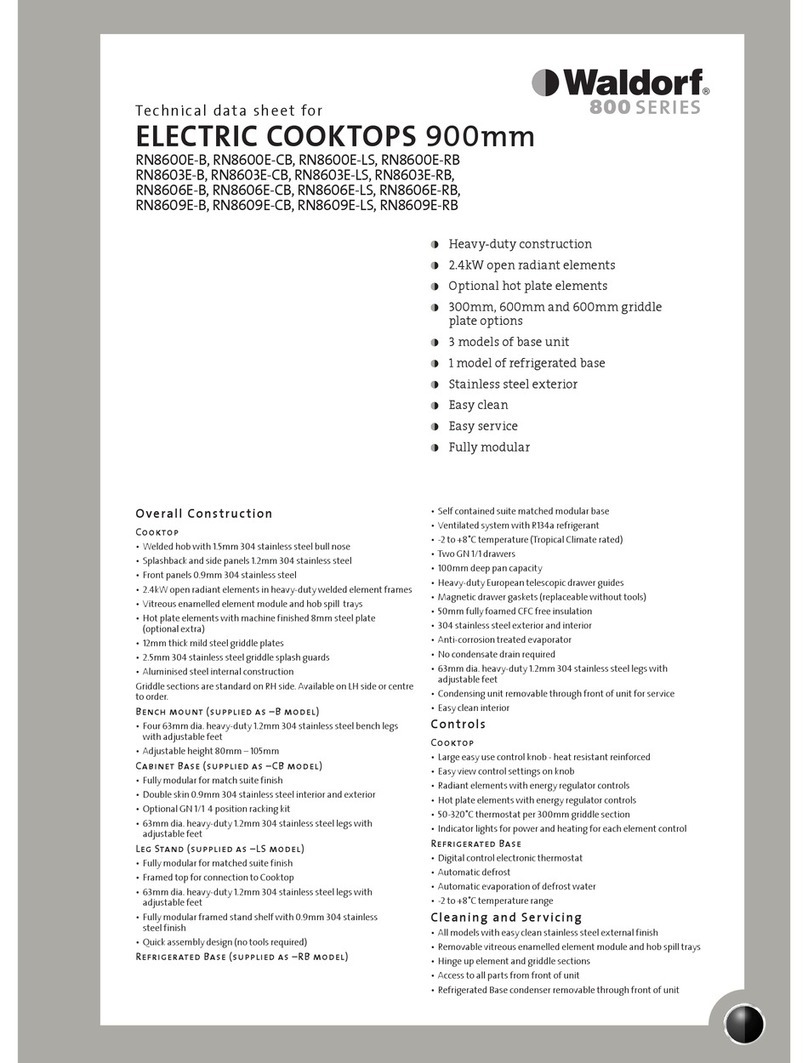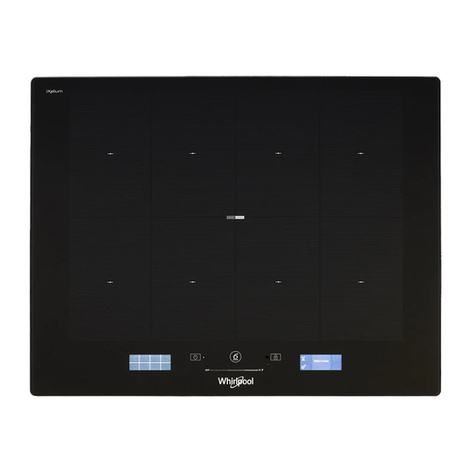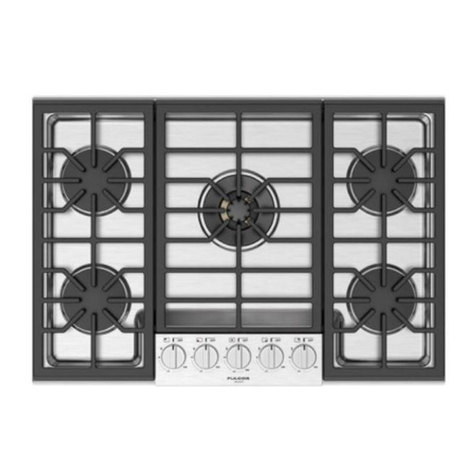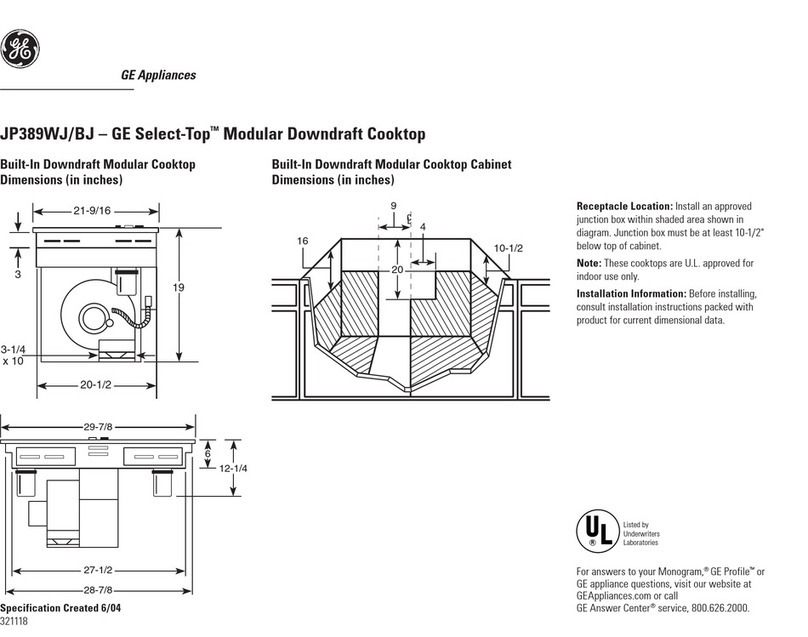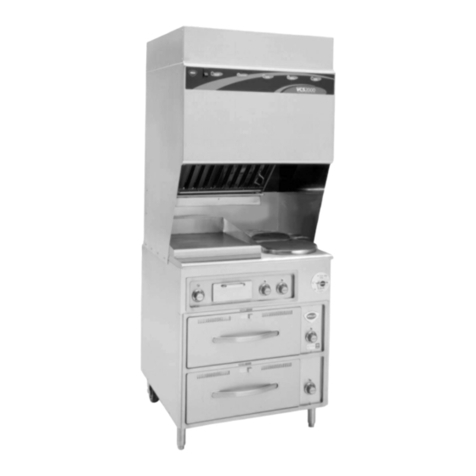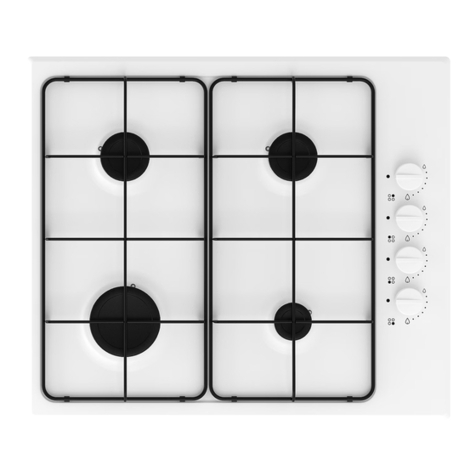
Technical Information
2
KM 34xx Gas Cookto
s
Table of Contents
AWarning and Safety Instructions ............................................................4
1General Information......................................................................................... 4
2Touch Current Measurement ..........................................................................4
3Gas..................................................................................................................5
BModification History.................................................................................5
CTechnical Data..........................................................................................6
DLayout of Electrical Components ...........................................................8
010Cooktop.....................................................................................................9
1Technical Data ..............................................................................................10
2Function.........................................................................................................10
2.1Rapid Ignition..................................................................................... 10
2.2Thermocouple....................................................................................10
2.3 Automatic Re-Ignition ........................................................................10
3Fault Repair................................................................................................... 11
3.1Flame Does Not Ignite.......................................................................11
3.2Burners Do Not Light .........................................................................11
3.3Burners Do Not Light - No Gas Supply..............................................11
3.4Flame Goes Out at the Minimum Setting...........................................11
3.5Burner Ignites Automatically During Use ...........................................12
4Service ..........................................................................................................13
4.1Cooktop Surface Removal.................................................................13
4.3Gas Type (Jet) Conversion................................................................14
4.4Main Jet Replacement.......................................................................15
4.5Thermocouple (Flame-Monitoring Electrode) Removal .....................17
4.5.1Normal/Fast Burners..............................................................17
4.5.2Wok Burners ..........................................................................17
4.6Ignition Electrode Removal................................................................18
4.6.1Normal/Fast Burners..............................................................18
4.6.2Wok Burners ..........................................................................18
4.7Burning Properties Test.....................................................................19
4.7.1Normal/Fast Burners..............................................................19
4.7.2Wok Burners ..........................................................................19
4.8 Thermocouple Test............................................................................20
4.9Automatic Re-Ignition Test ................................................................20
020Burner Tap..............................................................................................21
4Service ..........................................................................................................22
4.1Switch Removal.................................................................................22
4.2Simmer Adjustment Jet Replacement ...............................................22
4.3Solenoid Removal..............................................................................23
4.5 Electronics Removal ..........................................................................23
4.6Transformer Removal ........................................................................ 24
4.7Terminal Block Removal....................................................................24
4.8Leakage Test.....................................................................................25
4.9Solenoid Continuity Check.................................................................25
